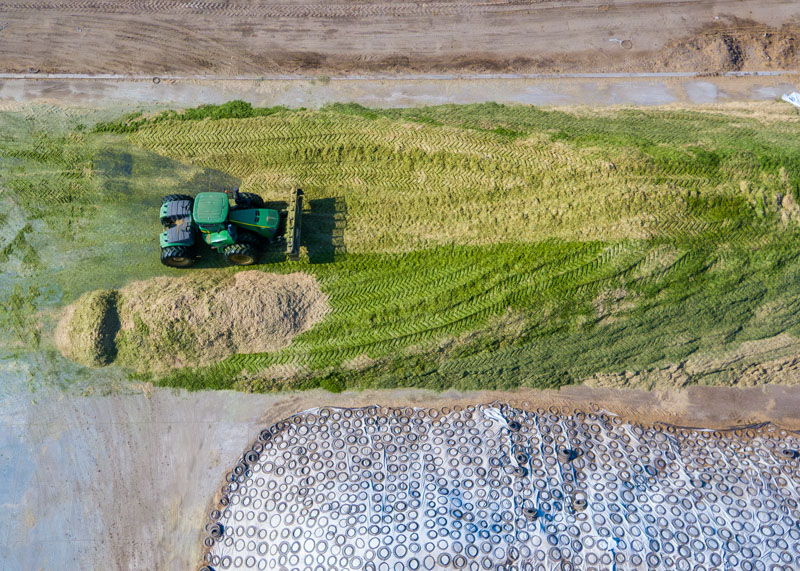Corn silage is a valuable feed for dairy and beef cattle, as it provides energy, protein, and fiber in a single package. One of the main sources of energy in corn silage is starch. Corn starch is the storage form of carbohydrates in the kernels. Starch content and digestibility are the key factors that affect the quality and feeding value of corn silage.
Starch content in corn silage
It depends on several factors, such as:
- Maturity of the corn plant at harvest
- Proportion of grain to stover (leaves and stalks)
- Hybrid / Variety selection
- Corn growing conditions
- Storage options and processing
In general, starch content increases as the corn plant matures and the kernels fill with starch (corn milk line). The proportion of grain to stover also affects starch content, as grain has more starch than stover. Corn varieties with different kernel types (flint, dent or floury) may have different starch contents and digestibility. Corn crop farming practises and other conditions such as temperature, irrigation and pest pressure can influence starch accumulation and availability in the kernels. The storage and processing can also affect starch content, as some starch may be lost due to fermentation or spoilage.
The target range for starch content in corn silage is 25 to 40%. It does depend on the type and level of production of the animals being fed. Starch content below 25% may indicate immature or drought-stressed in corn. While starch content above 40% may indicate over-mature (late harvest) or drought-stressed corn with low stover digestibility. Starch content can be measured by laboratory analysis or estimated by near-infrared reflectance spectroscopy (NIRS).
Digestibility
The digestibility of starch in corn silage is influenced by the physical and chemical characteristics of the kernels. Characteristics such as kernel hardness, vitreousness, endosperm type and protein matrix. Harder kernels with more vitreous endosperm have lower starch digestibility than softer kernels with flourier endosperm. The protein matrix that surrounds the starch granules also affects starch digestibility. Because it forms a barrier that limits the access of enzymes to starch. The protein matrix can be disrupted by kernel processing, which involves cracking or crushing the kernels during harvest or ensiling. Kernel processing increases starch digestibility by exposing more surface area of the starch granules to enzymatic digestion.
The digestibility of starch in corn silage also changes over time during storage. Because fermentation and microbial activity modify the structure and availability of starch. Starch digestibility increases over the first five to six months of storage, with marginal increases thereafter. The optimal storage time for corn silage to reach maximum starch digestibility depends on several factors, such as moisture content, kernel processing, inoculant use and storage conditions.
The target range for starch digestibility in corn silage is 70 to 90%, depending on the type and level of production of the animals being fed. Starch digestibility can be measured by laboratory analysis using ruminal microbes or enzymes or estimated by NIRS.
Conclusion
Starch is a key component of corn silage that provides energy for dairy cows and beef cattle. The quality and feeding value depend on both starch content and digestibility, which are influenced by many factors from harvest to feeding. Measuring or estimating starch content and digestibility can help optimize corn silage management and utilization for different animal groups.

